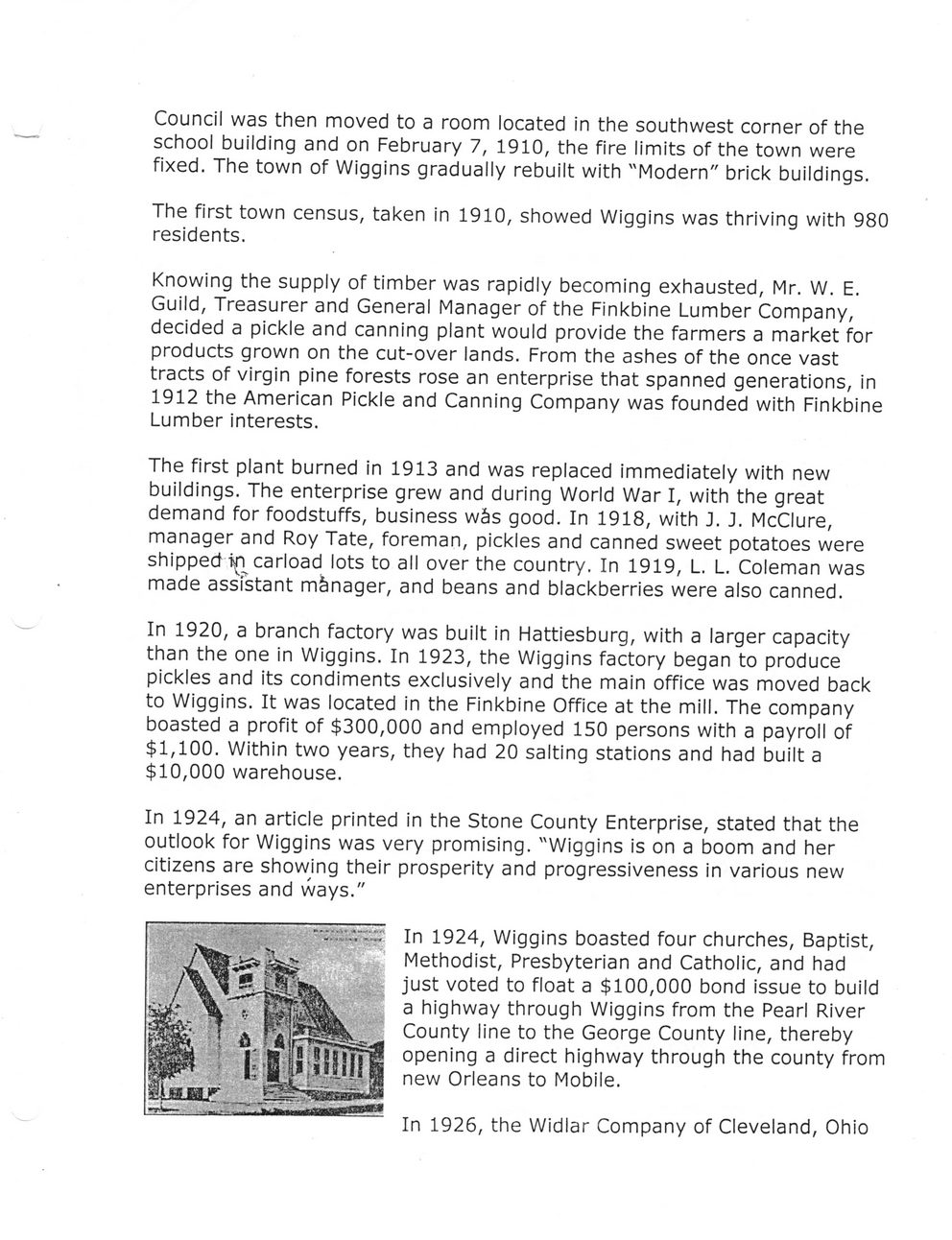This text was obtained via automated optical character recognition.
It has not been edited and may therefore contain several errors.
Council was then moved to a room located in the southwest corner of the school building and on February 7, 1910, the fire limits of the town were fixed. The town of Wiggins gradually rebuilt with "Modern" brick buildings. The first town census, taken in 1910, showed Wiggins was thriving with 980 residents. Knowing the supply of timber was rapidly becoming exhausted, Mr. W. E. Guild, Treasurer and General Manager of the Finkbine Lumber Company, decided a pickle and canning plant would provide the farmers a market for products grown on the cut-over lands. From the ashes of the once vast tracts of virgin pine forests rose an enterprise that spanned generations, in 1912 the American Pickle and Canning Company was founded with Finkbine Lumber interests. The first plant burned in 1913 and was replaced immediately with new buildings. The enterprise grew and during World War I, with the great demand for foodstuffs, business wSs good. In 1918, with J. J. McClure, manager and Roy Tate, foreman, pickles and canned sweet potatoes were shipped >n carload lots to all over the country. In 1919, L. L. Coleman was made assistant manager, and beans and blackberries were also canned. In 1920, a branch factory was built in Hattiesburg, with a larger capacity than the one in Wiggins. In 1923, the Wiggins factory began to produce pickles and its condiments exclusively and the main office was moved back to Wiggins. It was located in the Finkbine Office at the mill. The company boasted a profit of $300,000 and employed 150 persons with a payroll of $1,100. Within two years, they had 20 salting stations and had built a $10,000 warehouse. In 1924, an article printed in the Stone County Enterprise, stated that the outlook for Wiggins was very promising. "Wiggins is on a boom and her citizens are showing their prosperity and progressiveness in various new enterprises and ways." In 1924, Wiggins boasted four churches, Baptist, Methodist, Presbyterian and Catholic, and had just voted to float a $100,000 bond issue to build a highway through Wiggins from the Pearl River County line to the George County line, thereby opening a direct highway through the county from new Orleans to Mobile. In 1926, the Widlar Company of Cleveland, Ohio

Amish 29